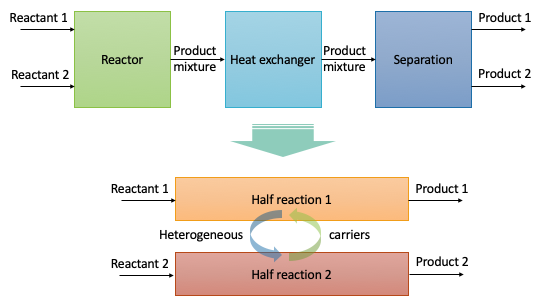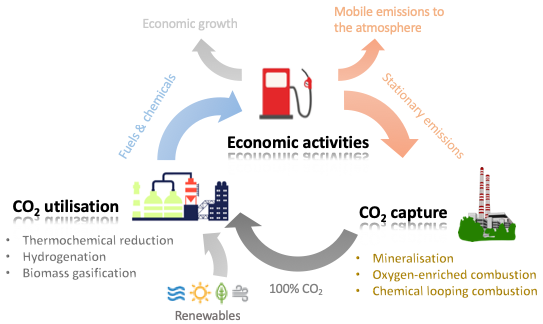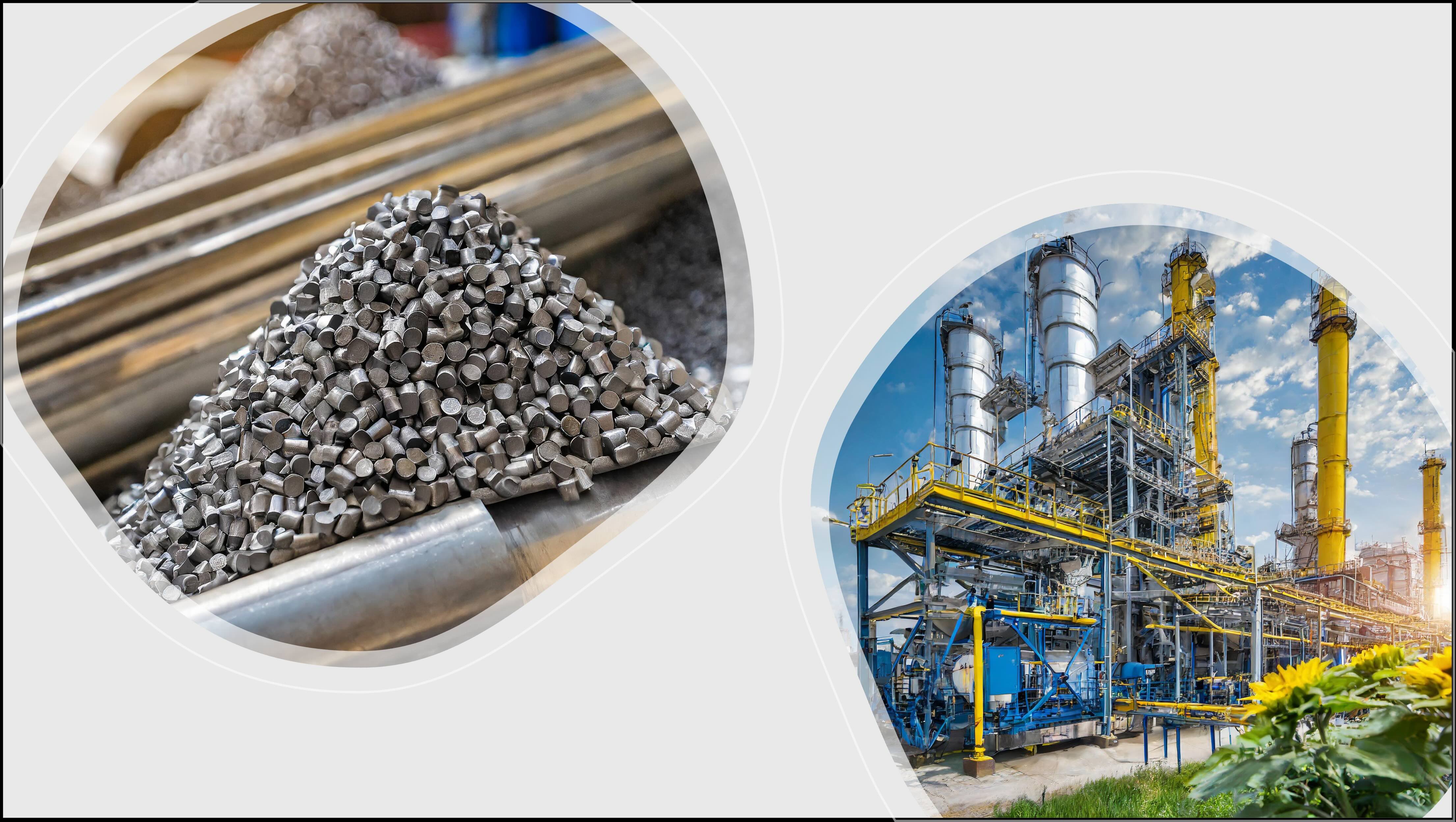
Chemical looping is a process intensification strategy that slip a catalytic cycle into two or more steps, which are run in separate reactors. By doing so, chemical looping offers potential for energy savings by (i) removing the need for product separation, (ii) allowing precise control of the chemical activities of the participating species and (iii) activating the reactants in more favourable conditions.
Example applications includes oxy-combustion, carbon capture, thermochemical water splitting, methane reforming, etc. The key to an efficient chemical looping process is the availability of highly reactive and durable carrier materials. Our research focuses on investigating the cyclic behaviour of carrier materials using operando characterisation techniques and developing novel high performance carriers with the aid of computational thermodynamics.

The carbon capture, storage and utilisation scheme (CCSU) addresses anthropogenic CO2 emission from stationary sources (e.g. power plants, chemical industry, cement industry).
For carbon capture, we develop high performance CO2 carriers and oxygen carriers for applications in post combustion carbon capture and oxy-fuel combustion, respectively.
Our lab also studies the catalytic activation of the captured CO2 by renewable hydrogen through thermochemical pathways. A pathway of particular interest is CO2 to methanol, which is an important presursor for the production of other commodity chemcials, such as formaldehyde, acetic acid, MTBE and light olefins.

We work closely with industrial partners to develop new catalysts and reactor concepts with the aim of reducing the cost of chemical transformations that are of high relevance to the market. Processes of interest include but not limited to, biomass conversion to fuels, gatewy chemicals and value-added specialty chemicals, pharmaceutical manufacturing, and liquid organic hydrogen carrier technologies.
In addition to develop catalyst formulations with high intrinsic activities and selectivities, we also investigate factors that will impact the process economics, including catalyst deactivation, attrition, intra-particle mass transfer, heat management, and product separation.